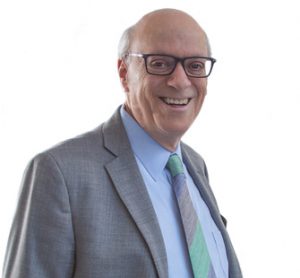The Metropolitan Museum of Art (The Met) is one of the greatest museums in the world. Yet many people living in or surrounding New York City have never been there. Realizing this, for several years, I took a group of interns each summer on a day trip in Manhattan, culminating with an afternoon at The Met.
I organized my tour centered around four works of art that have a connection to accounting. I discussed each of these objects, which were situated all over the museum, so there was a lot of walking and looking at all the goodies the museum had to offer. Recently, the topic of Art and The Met has popped up in some of my conversations, and because of that, I decided to share the info about my Met field trips.
Bookkeepers Lead the World Into the Modern Eras
The first art object is a cuneiform clay tablet from ±3000 BCE (Gallery 202) with accounting information, which placed accounting at the beginning of recorded history. Many people are unaware that the first human writings – shifting us out of prehistoric times – were accounting records. The earliest writings are from around 3400 BCE in Mesopotamia, modern-day Iraq. Around that time, domestication started with farming, and people owning land hired others to work it. Payment was based on how much work each person did, and they kept track of their production on clay tablets. Pretty exciting stuff, Huh?
Introducing the Father of Accounting
The next item is an account book cover from 1343 from the Italian City of Siena (Gallery 307). The Father of Accounting is recognized to be Fra Luca Pacioli, who incidentally was a friend of Leonardo da Vinci. In 1494, Fra Luca wrote a book containing everything anyone knew about mathematics, and he included a chapter on the mathematics of commercial transactions. That chapter explained in detail the use and meaning of Debits and Credits, as well as the Assets = Liabilities + Capital equation we still use today. He based his writing on the Venetian accounting methods, which had been developed a little before 1340, so we were able to see an actual account book from the beginning of accounting. More excitement!
BTW, Luca, a mathematician, taught Leonardo perspective as a mathematical technique, and Leonardo applied this learning about perspective when he painted the Last Supper. Pretty cool!
Further, Fra Luca designed a geometric alphabet, and his letter “M” was used for many years as The Met’s logo but has since been replaced.
Accountants – Muses for Van Gogh
My tour includes a painting by Vincent Van Gogh titled L’Arlesienne: Madame Joseph-Michel Ginoux looking over her account books (Gallery 825). Everyone in business needs to keep accounting records, whether for their own controls and understanding of how well, or (Ugh) poorly, the business is doing, possibly to procure a loan, and nowadays for tax purposes. This painting is an accounting “action” scene caught in time by the famous artist in 1889, a year before his death. When you look at the painting, see if you can figure out what Madam Ginoux is contemplating based on the previous night’s revenues!
Accounting Valuations and Art Sales Records
The fourth painting was Rembrandt’s Aristotle Contemplating the Bust of Homer (renamed Aristotle with a Bust of Homer) (Gallery 616), which was acquired in 1961 by The Met for the highest price ever paid for a painting at that time, $2.3 million. This 1653 painting’s relationship to Accounting is the price paid and how that provided tremendous ancillary benefits and value to The Met. Some CPAs specialize in valuations and forensic investigations. Understanding value drivers is an important skill we need to be adept at. When I completed my tour, I gave each intern a reproduction of the NY Times front page reporting that purchase. It was a big deal at that time, and I remember visiting The Met at least a dozen times to get a view of the painting, which had long lines moving at a not-too-slow pace. Today, you can walk within two feet of it.
I included the gallery numbers if you want to check out these art objects in person – something I highly recommend as it’s not the same viewing them on a website.
There are many other museums in Manhattan – and most likely local to wherever you live – that can easily be visited. I believe it is important to be able to enjoy some of the finer things in life.
In all, we all had a wonderful day, and it was an easy way for me to get to know these future leaders of accounting.
Comment: My Memoirs as a CPA book has been published and is available in Kindle and print editions at amazon.com. Buy it, read it and enjoy it!
Contact Us
If you have any tax, business, financial or leadership or management issues you want to discuss please do not hesitate to contact me at [email protected] or click here.



